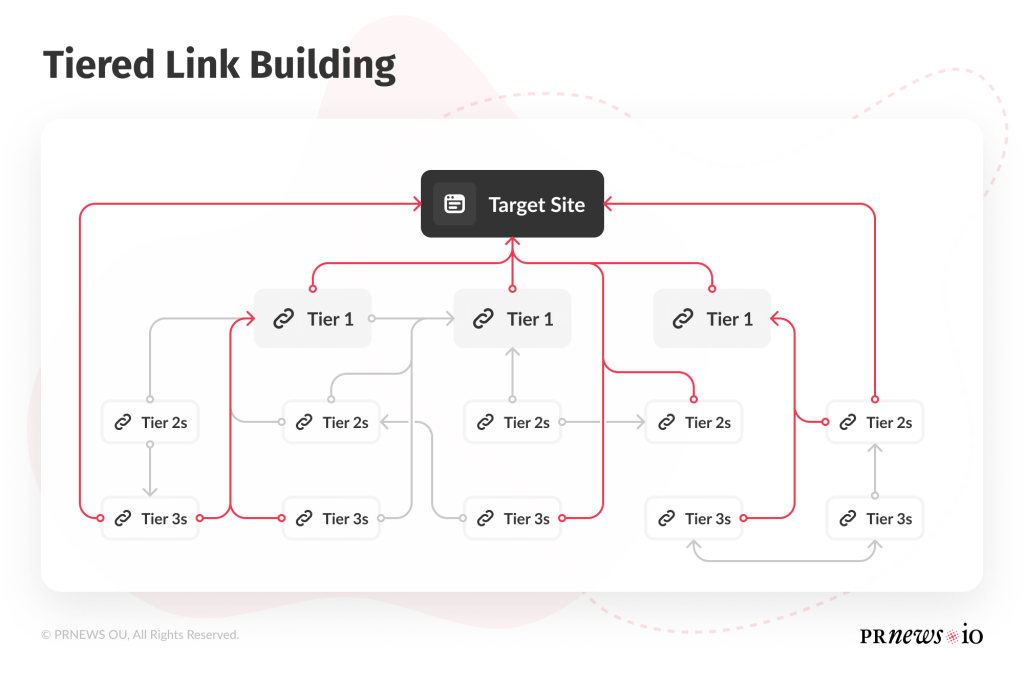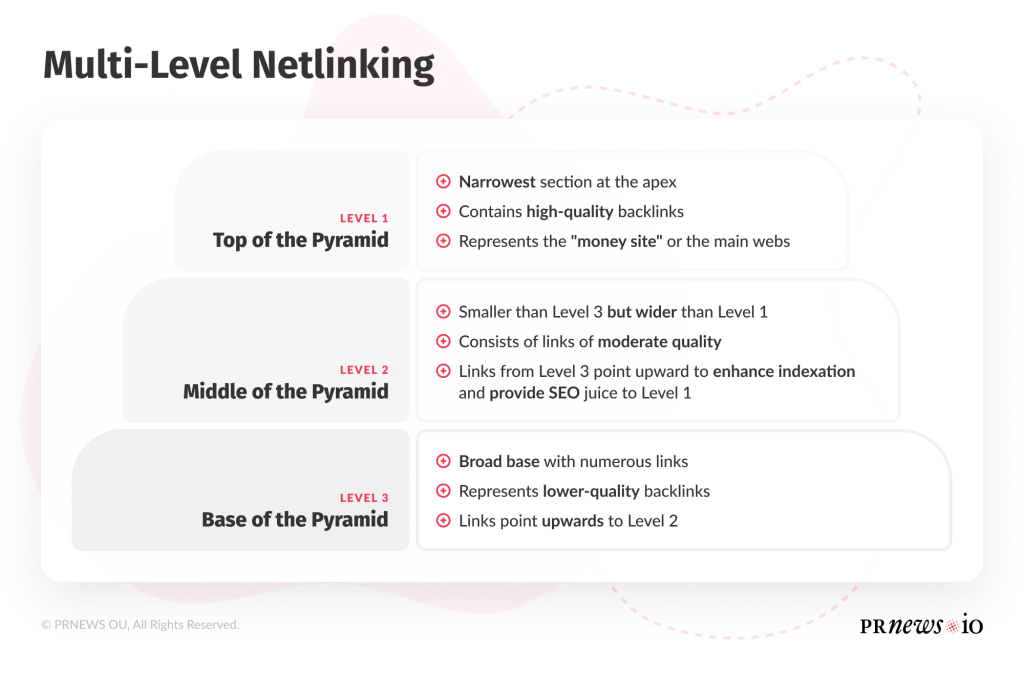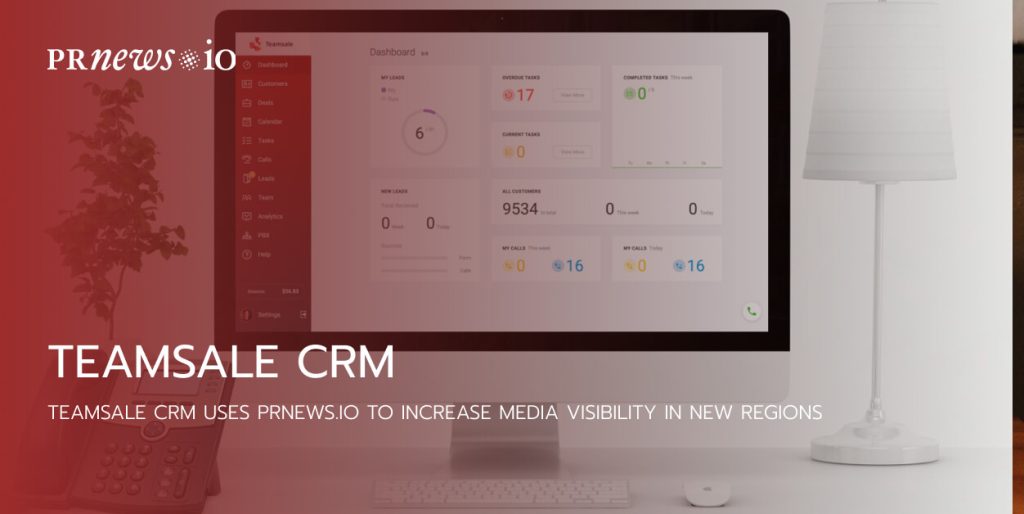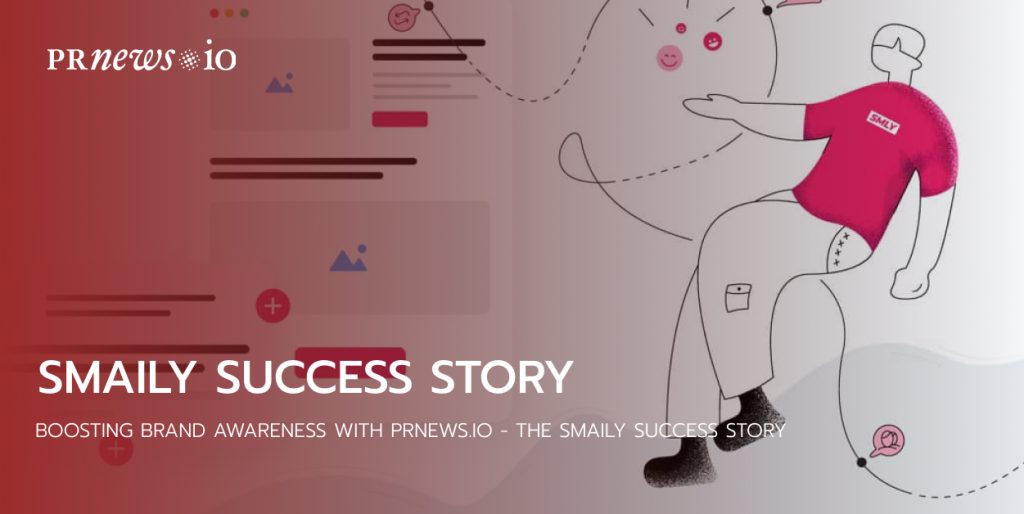Tiered Link Building is a systematic approach to link building that involves creating multiple layers or tiers of backlinks to improve a website’s search engine rankings and authority. This method follows a hierarchical structure where high-quality and authoritative links form the top tier, which subsequently supports and strengthens lower-tier links. By diversifying link sources and strategically linking to each other, tiered link building aims to enhance link juice flow and boost overall SEO performance.
What is tiered link building?
Understanding tiered link building and the link pyramid structure is crucial for marketers and SEO professionals. This strategy helps improve a website’s link profile and enhances search engine rankings effectively.
Tiered link building follows a pyramid-like structure, with Tier 1 at the top and subsequent tiers forming the base. In Tier 1, high-quality backlinks from authoritative sources directly point to the target website. Tier 2 links point to Tier 1, and Tier 3 links to Tier 2, creating a hierarchy that distributes link authority and juice, benefiting the target website’s SEO.

Unlike traditional link building, where backlinks go directly to the target website without a structured hierarchy, tiered link building strategically creates a link network. This approach supports and reinforces the target website’s link profile, aiming to improve link authority and the flow of link juice. Ultimately, this results in more significant SEO benefits compared to conventional link building methods.
The Role of Each Tier in the Link Building Process
Tier 1. This top tier consists of high-quality and authoritative backlinks obtained from reputable websites, social media platforms, guest posts on authoritative blogs, and other reliable sources. These Tier 1 links directly impact the target website’s rankings and domain authority.
Tier 2. The second tier supports Tier 1 by linking to the Tier 1 sources. Tier 2 links can come from web 2.0 properties, article directories, and niche-related forums. These links reinforce the authority of Tier 1 and, in turn, contribute to the target website’s link juice.
Tier 3 and Beyond. Subsequent tiers further strengthen the link network by linking to Tier 2 and possibly to each other. While the link authority diminishes with each tier, this layered approach ensures a steady flow of link juice to the target website, benefiting its SEO performance.

Ensuring Link Diversity and Relevance
To keep your links diverse and relevant, it’s important to balance your use of anchor text and link types. Avoid over-optimizing by using different anchor text types like exact match, partial match, branded, and generic. Also, mix up your link types—use contextual links, image links, and naked URLs for a more natural link profile.
A natural link profile is crucial for long-term SEO success. Search engines prefer links earned organically, without any manipulation or artificial methods. Steer clear of link schemes and excessive link building in a short period, as it can alert search engines and result in penalties. Instead, focus on earning links through top-notch content and building genuine relationships with other websites.
Make sure your anchor text and links match your target keywords and relevant content. Link to pages that contextually relate to the anchor text and add value for users. When building links, concentrate on promoting content that aligns with your website’s theme and offers valuable information, naturally attracting more relevant links.

Common Mistakes to Avoid in Tiered Link Building
Focus on natural link acquisition, high-quality content, and a diverse link profile to enhance your website’s authority and search engine rankings while avoiding potential penalties from search engines.
Over-Optimization and Unnatural Link Patterns
One of the most common mistakes is over-optimizing anchor text and creating unnatural link patterns. Avoid using the same exact match anchor text excessively, as it can appear manipulative to search engines. Instead, focus on using a diverse range of anchor texts and link types to maintain a natural and organic link profile.
Using Low-Quality or Spammy Links
Building links from low-quality or spammy sources can severely damage your website’s credibility and rankings. Avoid link farms, private blog networks (PBNs), and other black hat link building practices. Instead, prioritize quality over quantity, and focus on obtaining links from authoritative and relevant websites.
Neglecting Content Quality and Relevance
Tiered link building should be driven by valuable and relevant content. Neglecting content quality can hinder the success of your link building efforts. Ensure that your content is informative, engaging, and aligns with the interests of your target audience. Linking to irrelevant or low-quality content can lead to a poor user experience and negatively impact your website’s rankings.
Expanding on Multi-Level Netlinking and SEO Cascading
In addition to Tiered Link Building, there are related concepts such as Multi-Level Netlinking, SEO Cascading, and Cascading Backlinks that further contribute to an effective SEO strategy.
Multi-Level Netlinking
Multi-Level Netlinking is an extension of tiered link building that emphasizes creating multiple levels or tiers of backlinks in a more intricate fashion. This advanced approach involves deeper link structures, allowing for increased complexity in distributing link authority across various tiers. The aim is to create a comprehensive network that maximizes the impact on search engine rankings.
Multi-level netlinking is a sophisticated SEO strategy that involves the creation of a hierarchical structure, resembling a pyramid, to systematically build and strengthen backlinks for improved search engine rankings. This approach consists of multiple tiers, with each tier containing a specific set of links. The primary objective is to channel link equity from lower-quality sites in the lower tiers to higher-quality sites, particularly the main website, situated at the top of the pyramid. By strategically linking different levels, this method aims to enhance indexation, boost link authority, and improve overall visibility and popularity of the target site through effective referencing.

SEO Cascading
SEO Cascading is a broader term that encompasses various strategies, including Tiered Link Building and Multi-Level Netlinking. It involves the systematic arrangement of links to create a cascading effect, ensuring a steady flow of link authority from higher tiers to lower tiers. SEO Cascading aims to optimize the impact of backlinks on a website’s overall search engine performance by strategically organizing link structures.
Cascading Backlinks
Cascading Backlinks refer to the specific practice of organizing backlinks in a cascading manner, similar to a waterfall effect. Each tier of backlinks contributes to the next, forming a cascading sequence that enhances the overall link profile. This method ensures a gradual and controlled transfer of link authority throughout the different levels, leading to improved SEO outcomes.
Integrating Multi-Level Netlinking, SEO Cascading, and Cascading Backlinks into your overall SEO strategy can provide a more nuanced and sophisticated approach to link building. These techniques offer flexibility in adapting to the specific needs of your website and niche, allowing for a more targeted and effective enhancement of search engine rankings and authority.
Content Marketing Platform
- 100,000+ media publications;
- get backlinks to your product;
- scale work with content distribution.
FAQ: Tiered Link Building
How does tiered link building work?
In tiered link building, the first tier consists of high-quality backlinks directly pointing to the target website. The second tier includes links pointing to the first-tier links, and so on. This tiered structure is designed to pass link juice and authority from one layer to another, ultimately benefiting the target website’s SEO performance.
What are the advantages of using tiered link building?
Tiered link building can help improve a website’s search engine rankings by creating a more natural and diverse backlink profile. It also allows for better control over anchor text distribution and helps in avoiding potential penalties from search engines.
Are there any risks associated with tiered link building?
While tiered link building can be effective, it’s important to use it cautiously. Over-optimization, low-quality links, or unnatural link patterns can lead to penalties from search engines. It’s crucial to focus on quality over quantity and adhere to SEO best practices.
What types of links should be used in tiered link building?
The first tier should ideally consist of high-quality, authoritative links from reputable sources. As you move to lower tiers, you can use a mix of contextual links, social signals, and other types of links. It’s essential to maintain a balance and ensure diversity in the link profile.
How long does it take to see results with tiered link building?
The timeline for seeing results varies depending on various factors, including the competitiveness of your niche and the quality of your link building efforts. Generally, it may take several weeks to months before significant improvements in search engine rankings are noticeable.
Are there alternative strategies to tiered link building?
Yes, there are various link-building strategies, such as guest posting, influencer outreach, and content marketing. The effectiveness of these strategies depends on your specific goals and the nature of your website. It’s often beneficial to combine multiple approaches for a well-rounded SEO strategy.
How often should I update my tiered link building strategy?
SEO is an ongoing process, and it’s recommended to regularly review and update your tiered link building strategy. Stay informed about changes in search engine algorithms and adapt your approach accordingly. Monitor the performance of your links and make adjustments as needed to maintain a strong and effective link profile.





